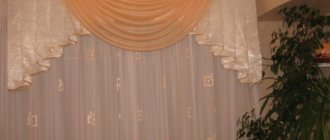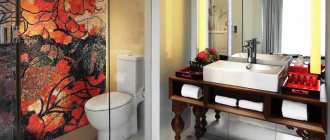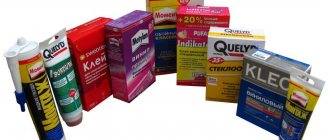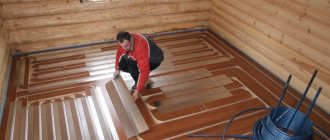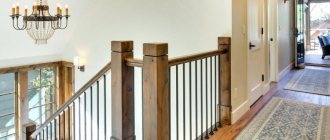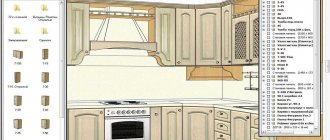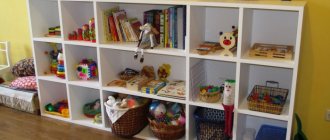The popularity of lambrequins has not subsided over the years. This is due to their excellent decorative qualities and practicality. In our material we will tell you about the types of lambrequins and provide step-by-step instructions for making this type of window drapery yourself.
From our material you will learn about the types of lambrequins and how to make lambrequins for the kitchen with your own hands
Lambrequins: concept and relevance in the kitchen interior
The lambrequin is a beautifully designed fabric that is located at the top of the window. It is performed in soft flowing drapery lines or in a rigid design and is complemented with various pleatings, flounces, tassels and folds. Often the decoration is attached to the outside of the cornice or to the curtain itself.
The word "lambrequin" comes from the French "lambrequin", which means a transverse drapery located at the top of a window opening, alcove or doorway and performing a decorative function.
Reference . In the 17th century, the famous style of the Late Renaissance, Baroque, began to gain popularity. The atmosphere of this direction suggested dazzling luxury throughout the decoration of the space. In rich houses, furniture appeared that acted as a piece of art and was not intended for practical use. Also decorating the interior were curtains, sewn from the most expensive fabrics and decorated with rich draperies, ruffles and lambrequins.
Nowadays, curtains for the kitchen with a lambrequin do not lose their attractiveness. They have a number of advantages that distinguish them from different types of curtains:
- they are practical because such a curtain is less dirty and can be quickly washed and ironed;
- the decoration allows the sun's rays to pass through light, short fabrics better than through thick curtains, which is especially important for a kitchen with poor lighting or short sunny days;
- the products are aesthetically pleasing and do not clutter up the space, which is especially important for small rooms with a countertop under the window;
- a bright, non-boring drapery will serve as a lively accent for an expressionless room or, conversely, a classic-style curtain will not distract attention from the original concept of the entire space.
Types of kitchen lambrequins
Types of lambrequins for the kitchen are divided into 3 groups:
- Hard.
- Soft (classic).
- Combined.
Bando
Lambrequins made from dense fabric are called bandeaus. They are made of fabrics glued with a special seal to impart rigidity. A dense lambrequin does not change its location or appearance, and is distinguished by an even geometric or non-standard shape. The products are mounted under the ceiling, reliably covering the shortcomings of the wall or console.
It is risky to use lambrequins in a room with low ceilings, because... the canopy acts as an element that compresses the space.
But if the designer insists, it is recommended to use a bandeau. It is supplemented with twisted cords or decorated with braid to match the curtains.
Combined
This lambrequin looks like a product with soft fabric folds and a rigid base. Combined decors are used for rooms whose interiors welcome notes of luxury.
Combined
Kitchen lambrequins are attached in several ways: on top of curtains; directly onto the cornice strip; on a multi-tier console (additional bar); for a baguette. The fastening method depends on the functional purpose of the room and design.
Soft
For a classic kitchen canopy, use the same fabric that is used in the basic curtain or choose contrasting textiles. It depends on what effect you want to achieve in the end. The main advantage of a soft canopy is its amazingly beautiful and smooth drapery.
The product is created by cutting out and fixing folds. Then they are sewn together, maintaining the intended shape. In the classic design, soft lambrequins for the kitchen absorb 1/5 or 1/6 of the length of the curtains. Products are often complemented with decorative elements:
- bell or tie (the fabric hangs down like a tie);
- swag (a fold made in the form of a double or single-cut shell);
- chill molds (folds of fabric diverging from the center or converging towards it);
- perekid (fabric thrown over the bar; visually resemble swags, but the upper sag is not filled with fabric);
- jabot (a vertical fold beveled to the side, made in the form of a frill);
In addition to complex draperies, unusual lambrequins and simple textile compositions are used. In this case, the fabric is simply placed horizontally, secured with bows, drawstrings or loops.
Soft
Varieties and their characteristics
Kitchen curtains and lambrequins differ in the following types:
Hard lambrequin
Allows you to effortlessly decorate the top of the window and hide the cornice. The decoration itself is made in the form of a strip of fabric according to an oval, rectangular, triangular, wavy or other, more complex shape, pattern. Often the base of the lambrequin is made of dense non-woven fabric, rarely - from a wooden frame.
Rigid lambrequins for the kitchen are also called straight, since they do not have curls and are located in a straight plane. Since the decoration has a rigid structure and can take different shapes, this advantage gives designers wide scope for creativity.
Soft
The product is an airy design, which consists of many lush elements, frills and ruffles. This decor expressively emphasizes the window opening.
To make the lambrequin look more interesting and stylish, use the following decoration methods:
- swag - a semicircle of soft fabric, draped in the form of folds or a shell;
- tie - a decorative element symbolizing a male item of clothing;
- jabot - flowing fabric with a lower bevel or arranged in steps;
- mold - soft gathers, flared in the center;
- festoons - elements for processing the edge of a lambrequin;
- fringe, braid and puffs - lush gathers along the lower edge of the fabric.
Combined
Combined lambrequins, consisting of soft and hard parts, are popular. The structures are fastened so that their hard part is located separately from the soft part. As a result, the tulle and curtains can be easily removed for washing; the dense frame remains and can be cleaned with a vacuum cleaner or a damp cloth.
Openwork
They are made using laser cutting. Fancy compositions are cut out on the surface of the canvas, giving the curtains an intriguing look. Such decorations can be rigid or combined. Attached to the cornice using adhesive tape or textile fastener.
Types of lambrequins
All types of lambrequins are divided into two types:
Tough look. Allows you to decorate the cornice, fastenings and the upper part of the wall above the window. Essentially, this is a straight sheet of fabric with a seal, fixed under the ceiling.
They come in different shapes:
- Oval;
- Rectangular;
- Complex shapes.
This type is decorated with all kinds of cords, ribbons, draperies or fringes.
Soft look. Gives extraordinary charm to the decor. For complex drapery options, patterns are prepared. The most exquisite styles are possible here, requiring the services of a specialist.
Combined view. It combines rigid construction and soft draperies. But this option is more suitable for a living room or bedroom. If the size of the room and windows allows, then this type is also suitable for the kitchen, giving it a festive look.
It is not difficult to make such elements. The main thing is to choose the appropriate style, fabric, and make a pattern.
Secrets of combining with curtains
Since lambrequins have a variety of textures, shapes and colors, they can be easily combined with any drapes, tulle or curtains. Let's consider the main options for such a harmonious “union”:
- A combination of cafe-style curtains with a lambrequin. The best solution for this combination is to use a soft lambrequin that falls in large folds.
- The combination of a lambrequin with roller blinds or blinds looks good. But then it is recommended to use a hard or soft lambrequin of a strict rectangular shape without unnecessary decorative details.
- The combination of a lambrequin and classic curtains is considered a traditional way to decorate a window . At the same time, flights of fancy are not limited and in combination with curtains hard, soft, combined lambrequins with fringe, braid, bows and many other elements are used.
- The decorations are perfectly complemented by tulle. Its light base, combined with a soft lambrequin made of translucent, easily draped fabric, gives the room airiness, grace and weightlessness.
- Rigid structures decorated with braid along the bottom edge are best suited for Roman blinds with a lambrequin . It is desirable that this set be in the same color scheme.
Combination of lambrequins with different interior styles:
- Contemporary . Otherwise, it is often called “luxurious simplicity.” To decorate a kitchen window in this style, it is best to use a simple rigid lambrequin in combination with blinds. The color scheme is selected in accordance with the overall interior, and it is advisable to choose light shades or white.
- Baroque . The style is pompous and luxurious. But to recreate it, a spacious room with a high ceiling is required. Then luxurious jabot lambrequins, falling down in soft folds, combined with heavy curtains made of expensive fabric, will fit well into the interior. Ruffles, fringes and lush tassels are also appropriate.
- Empire style . Another classic style, characterized by pomp and theatricality. However, to equip such an interior in the kitchen, space and a considerable budget are required. When decorating a room, only natural and expensive materials and decorative elements that are distinguished by elegance are allowed. For example, products of expensive materials, with an abundance of silk tassels, fringe, scallops and other decorations are suitable. Lambrequin can be soft, hard or combined.
- Art Deco. This style is distinguished by a combination of luxury and laconicism, and therefore requires a variety of fabrics of different lengths with uneven folds and an original combination of different textures. For example, to decorate one window, a rigid lambrequin made of several types of materials is suitable: light and airy organza, voile or taffeta, silk curtains with velvet or velor tie-backs. All this variety of fabrics is complemented by an abundance of decorative golden and silver elements and incompatible patterns.
- Country and Provence styles are characterized by cozy rooms, decorated in warm colors, with furniture and decor of simple shapes. When arranging a kitchen, the main rule is convenience and comfort, so when decorating a window, soft lambrequins made of light fabric are often used in combination with the same simple curtains. The use of ruffles, folds, frills and bows is encouraged.
- High tech. For this direction you need a rigid straight lambrequin, which is often combined with blinds. The color scheme is restrained, a combination of contrasting shades is possible.
Simple do-it-yourself lambrequin with folds
The simplest option is a rectangle of fabric attached to a curtain tape and gathered into folds. The edges of the product are hemmed, the curtain is attached to the cornice. This style does not require a pattern.
Attention! The lambrequin can be made strict or cheerful, cozy and extravagant. It is attached to the cornice, and with the help of threads of curtain tape, the required number of folds is collected.
A lightweight, pliable material that fits easily into folds and flounces is suitable for a lambrequin in the kitchen. These are synthetic and mixed fabrics. They absorb odors and dust less and dry quickly after washing. You should not choose dark, gloomy colors for the kitchen. It is better to choose, depending on the interior, country-style curtains or something light and airy in pastel shades.
The most suitable style for a beginner is a simple lambrequin with “tails”. Having mastered the sewing of this model, the housewife can move on to more complex designs - with swags, molds and ties.
This style will be combined with Roman blinds and light curtains. It is also good as an independent option.
Features of choice for the kitchen
First of all, let's decide on the type of fabric and style of the future decoration. However, you should not rush and choose the first option you like, since the appearance of the room will depend on these two criteria.
To choose the right lambrequin, take into account factors such as:
- purpose of the room;
- room dimensions;
- lighting;
- window opening dimensions;
- interior style.
For example, in a spacious and bright room with a high ceiling, luxurious heavy curtains with tiebacks and a lambrequin with lush draperies are appropriate. If the room is of modest size, tulle curtains with a simple lambrequin made of soft fabrics are more suitable.
Important ! Please note that for ceilings below 2.5 m, you should give preference to openwork models up to 15 cm wide or fabrics with vertical patterns and lines. It is better to immediately discard lush and bulky samples, since they visually lower the height of the room.
To make curtains with lambrequins in the kitchen look appropriate and last a long time, use the following useful recommendations:
- Maintain proportions. The lambrequin should be at a height of 1/6 of the distance from the eaves to the floor. This way it won’t cover the window and block natural light.
- Long draperies look out of place on small windows, as do complex lambrequin models . To avoid numerous design mistakes, it is better to contact a specialist who, taking into account the design features and sizes of window openings, will select the desired drapery configuration.
- When sewing kitchen curtains, give preference to breathable, fireproof, easy-to-care fabrics, preferably with special impregnations.
- To decorate a window on the shady side, use tulle, organza, chiffon or veil , and for windows on the sunny side, use dense or medium-density materials: cambric, silk, taffeta or velvet.
Kitchen curtains with a lambrequin are considered a simple and affordable way to transform the interior. In addition, there is an opportunity to save money if you show your imagination and make the decoration yourself. We will talk about this further.
Fashion trends in the design of lambrequins for the kitchen
Natural eco-friendly fabrics are trending: silk, cotton, linen or bamboo. Calm shades, ethnic motifs, beautiful flowing draperies and translucent fabrics are ideal for the kitchen. Decor for curtains is possible in contrasting rich colors, especially in studios or kitchen-living rooms.
The modest laconicism of minimalism again gives way to beauty and splendor. In the new season, multi-layer curtains with asymmetrical lambrequins in harmonizing shades are again popular. Textiles with shine or matte with geometric shapes look advantageous.
A thick plastic lambrequin in combination with roller blinds will be a stylish design. This combination allows you to regulate lighting from the street and hide from passers-by, which is especially problematic on the first floors of high-rise buildings.
A luxurious country house requires more expensive, elegant curtains with lambrequins.
Lambrequin for the kitchen: how to sew it yourself, step-by-step instructions
Attention! Detailed video instructions for sewing await you at the end of the article.
First, let's determine the list of materials and tools:
- any drapery fabric that matches the style of the room;
- ready-made openwork lambrequin or bandeau (if necessary);
- lining fabric;
- pattern paper;
- tape measure;
- decorative cords;
- non-woven and linen tapes;
- pencil;
- ruler;
- stapler;
- pins.
Let's move on to preparing the material. The first thing we do is place the fabric on a horizontal, flat surface (conveniently on the floor). Next, we calculate the required amount of fabric.
Reference . Often lambrequins consist of one, two or three sections. Their number and width depend on the length of the cornice and the width of the window. For example, for a one-section lambrequin, a piece of fabric equal to the width of the cornice is suitable. For two sections, the width is calculated using the formula: section width = cornice length / 5 x 3. Accordingly, for three sections: section width = cornice length / 7 x 3.
Let's consider the option of sewing a rigid rectangular lambrequin, which is suitable for inexperienced craftswomen.
The pattern looks like a rectangle. It has a length equal to the length of the cornice and a width of about a fifth or sixth of the main curtains.
Step-by-step lambrequin pattern:
- We transfer the patterns onto a special fabric for rigid frames (thermal bandeau) without allowance and cut them along the lines.
- Take the pattern again, transfer it to soft fabric and cut it out with an allowance.
- We glue the fabric onto the thermal bandeau using a steam iron. At the same time, it is important to monitor the fabric - no folds should appear on it.
- We process the edge with bias tape or hem it.
- Carefully place adhesive tape on the back side of the resulting decorative element so that it is not visible from above. To do this, you should retreat at least 2 cm from the top edge.
There is an equally easy to sew model made from semicircular elements. In this case, the pattern is a trapezoid, the height of which is equal to the height of the finished product x 1.5. We select the length of the workpiece in accordance with the length of the cornice and the total number of semicircular elements in the lambrequin.
Stages of work:
- We cut out trapezoidal parts.
- We process the edges of the product.
- We sew curtain tapes to the sides of the trapezoid and tighten them.
- The result is drapery in beautiful semicircles.
- At the top of the product we sew loops for fastening.
lambrequin puffs lambrequin puffs
lambrequin puffs lambrequin puffs
However, on the website, in the master classes, there is a lesson on how to make such a lambrequin puffs (according to the wicker pattern):
From this master class you will learn how to sew a lambrequin from a symmetrical crossover, resulting in a lambrequin crossover decorated with a flower made of fabric:
1. We process the upper and lower sagging with bias tape.
After this, be sure to iron and let the parts cool.
